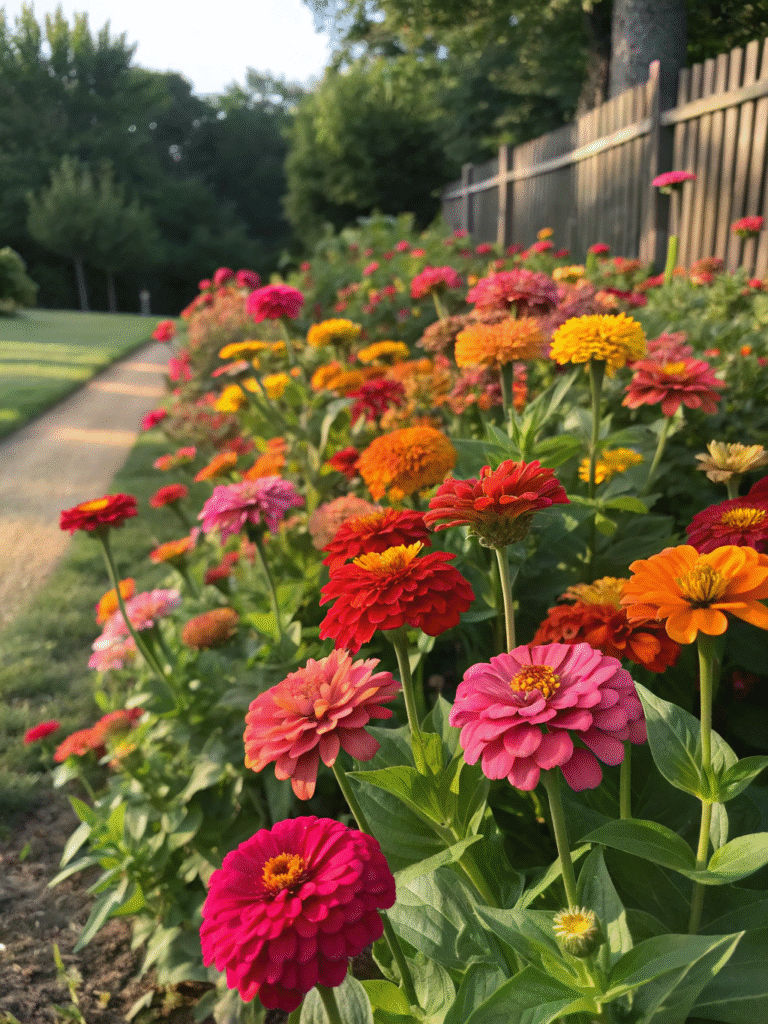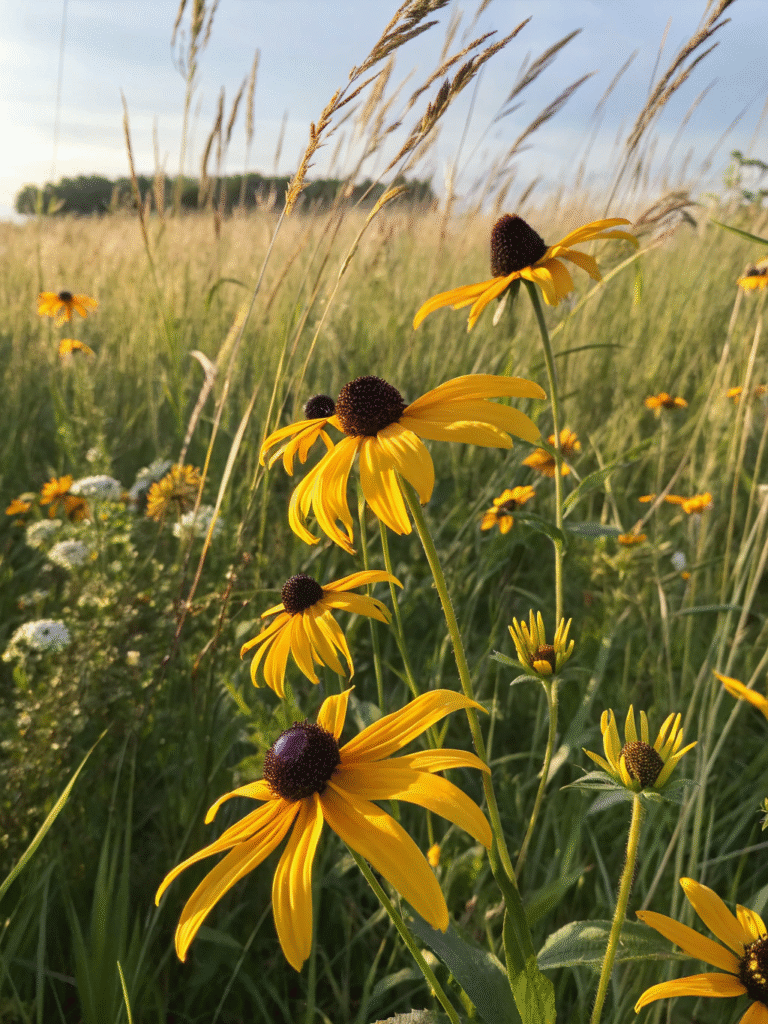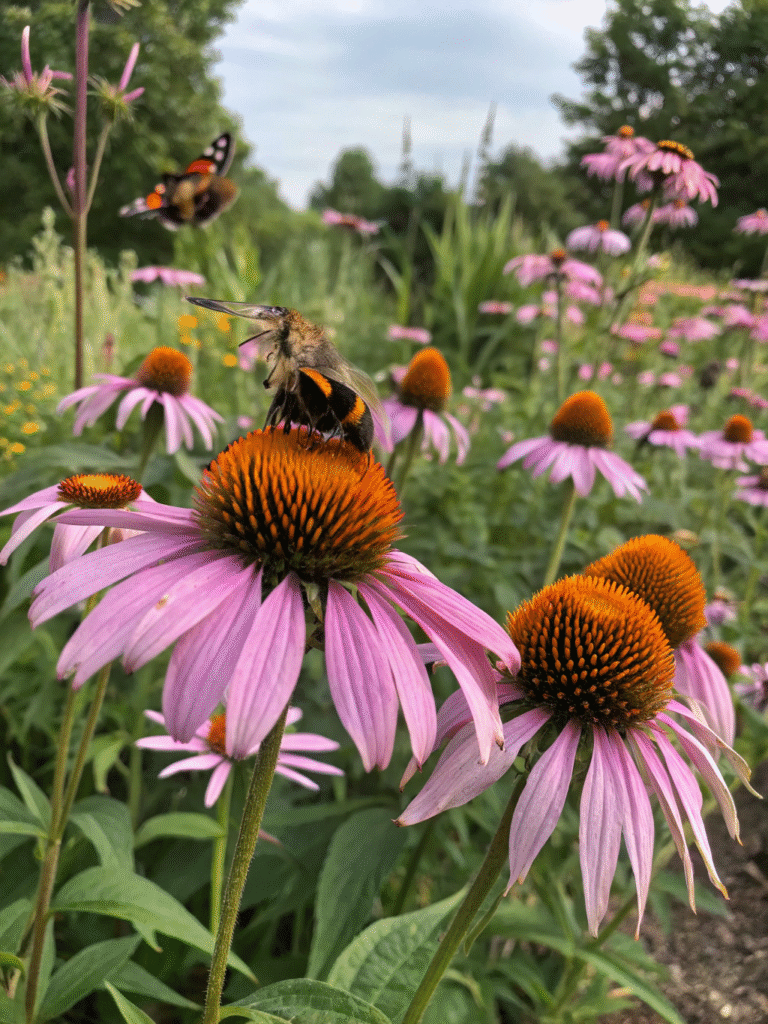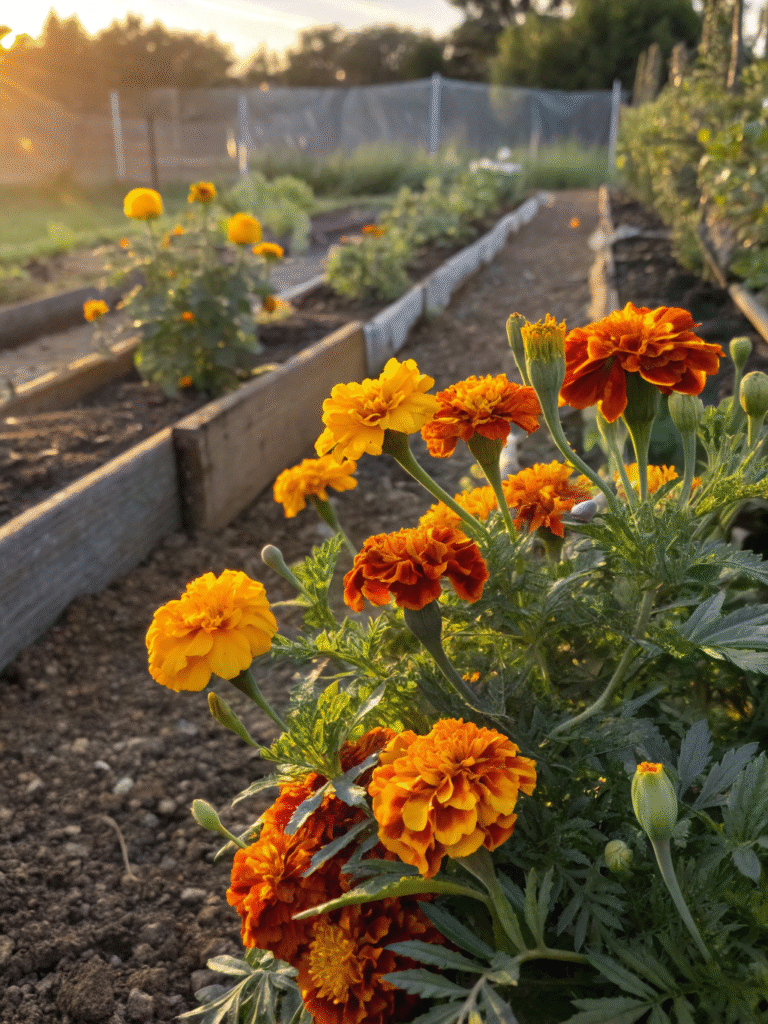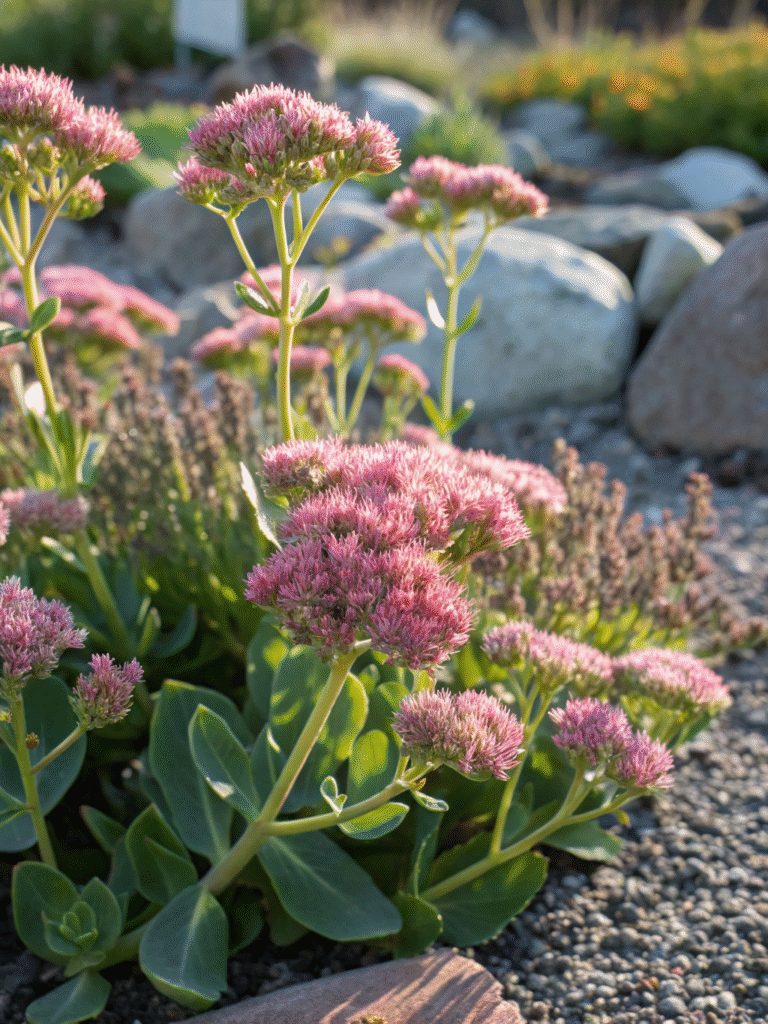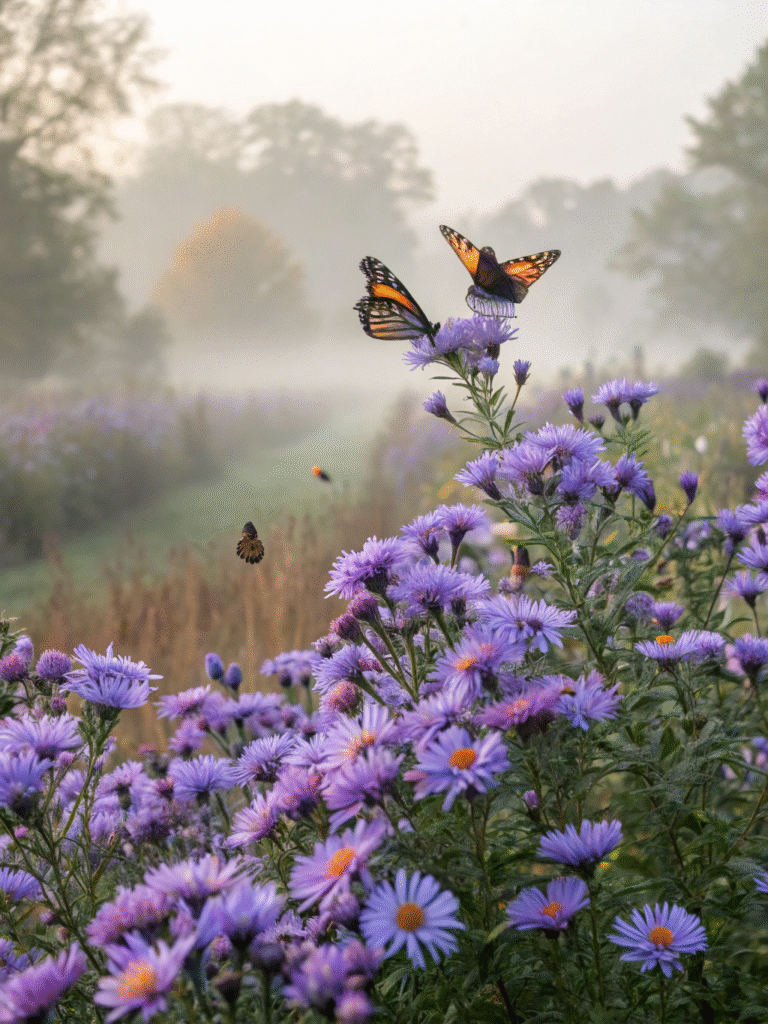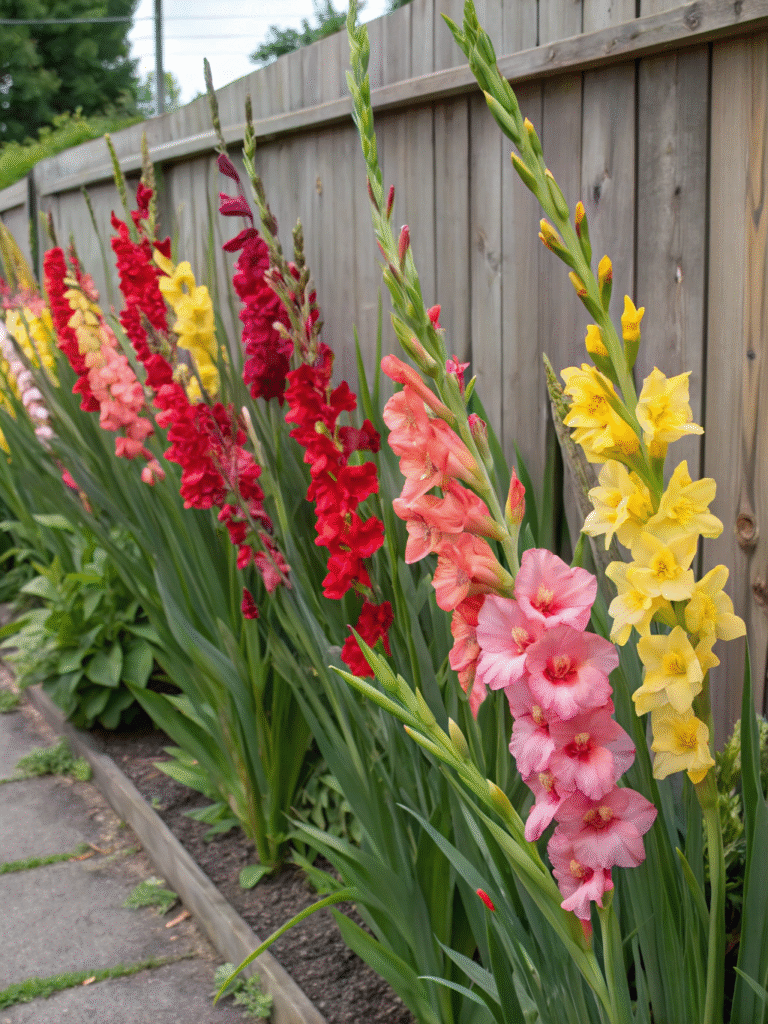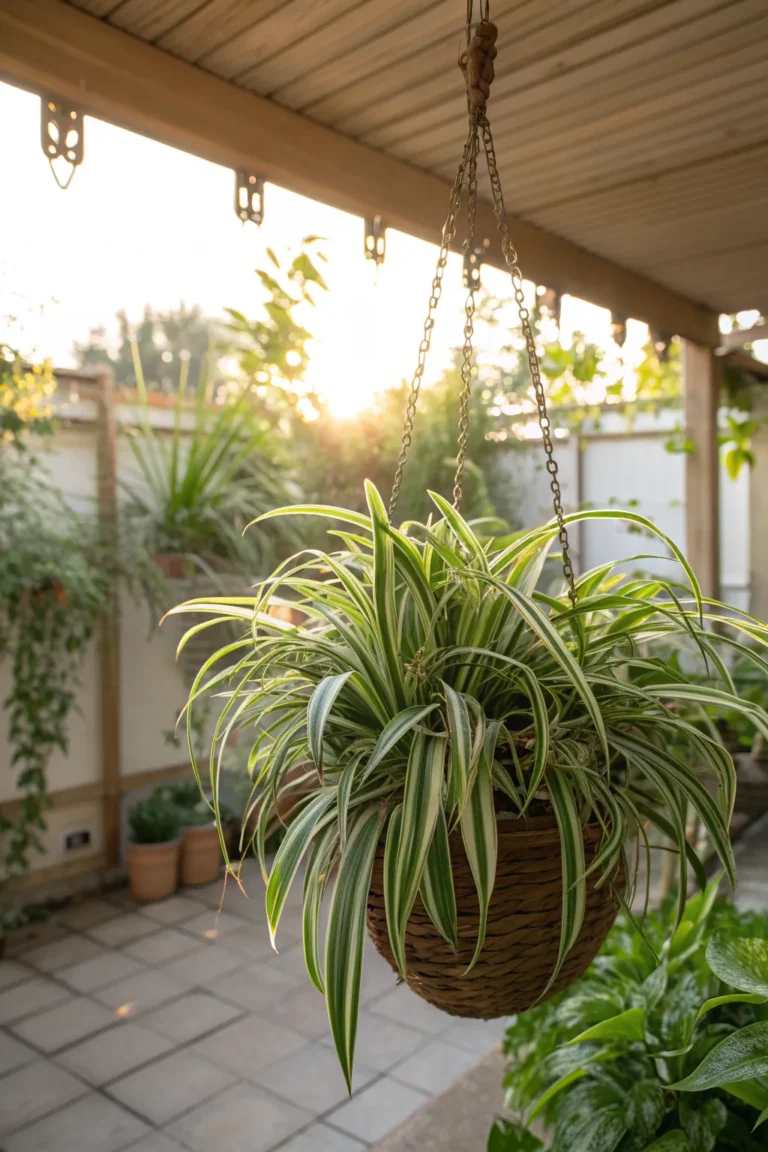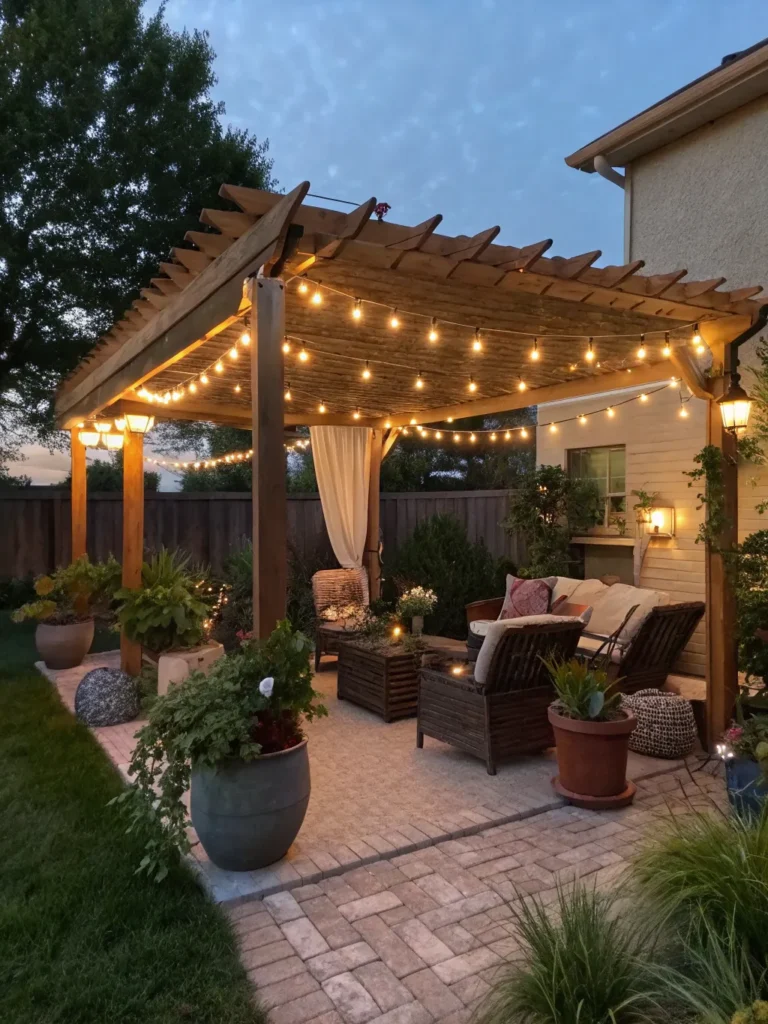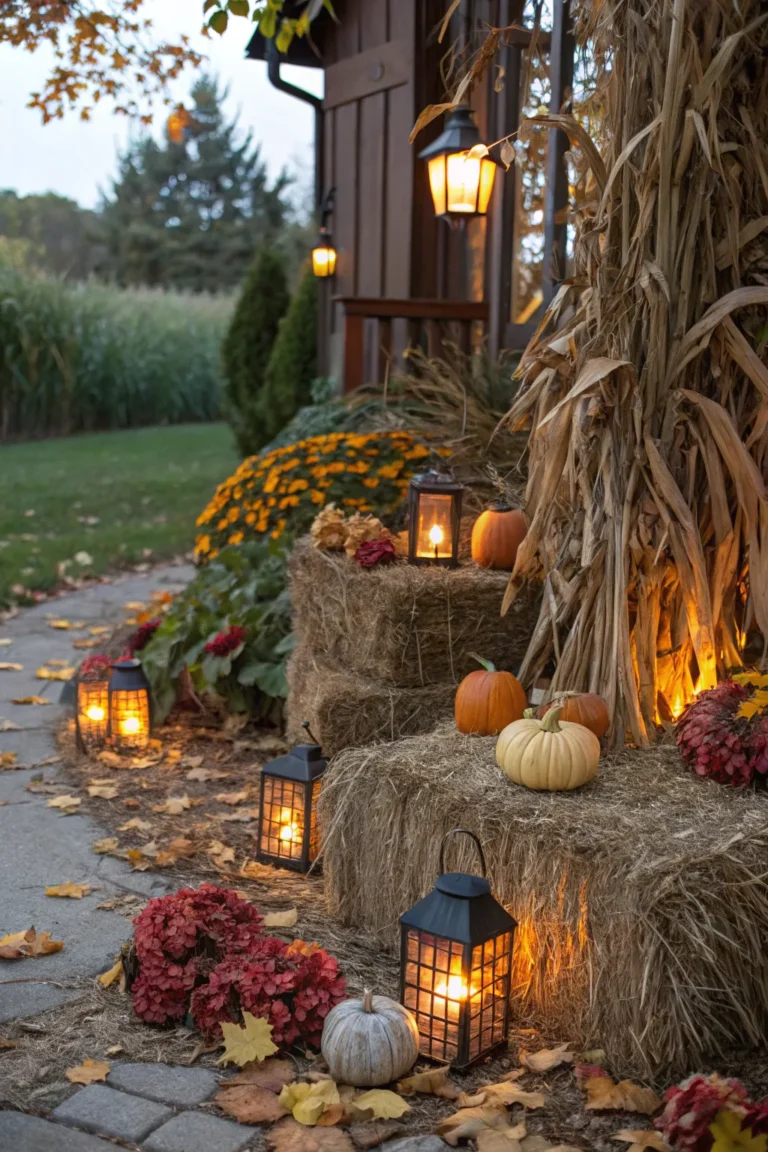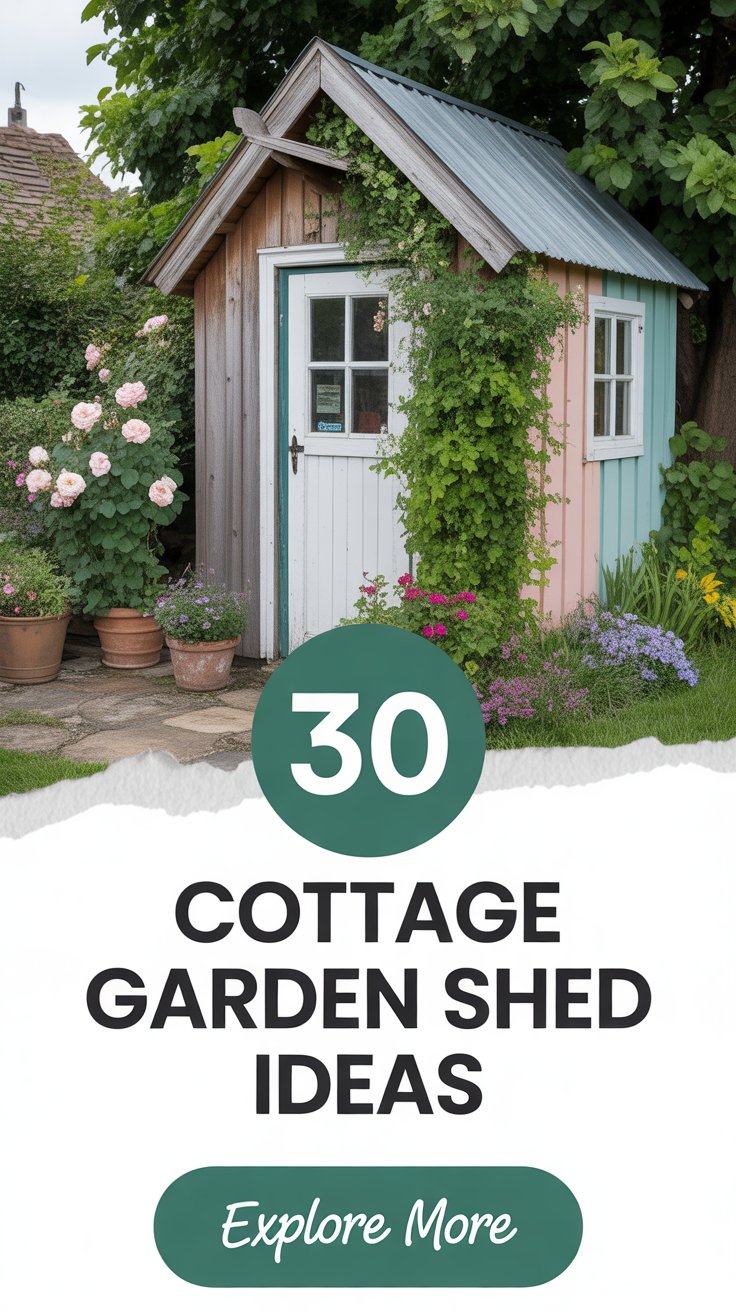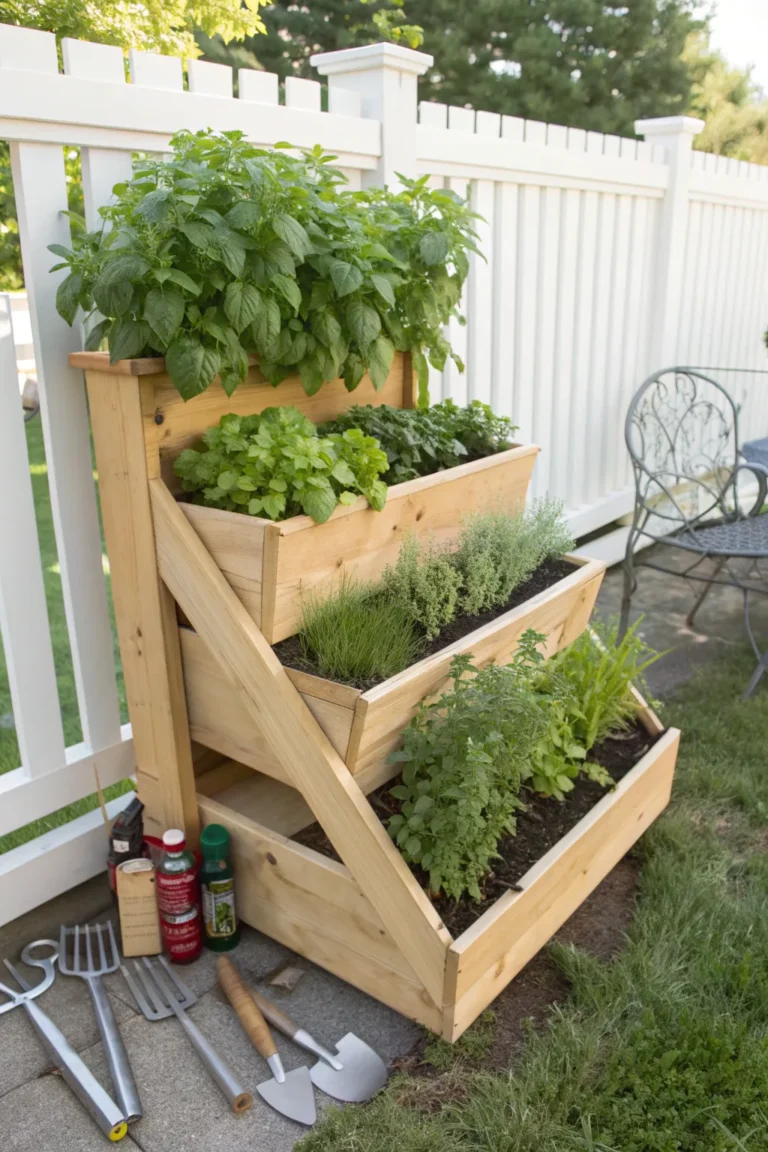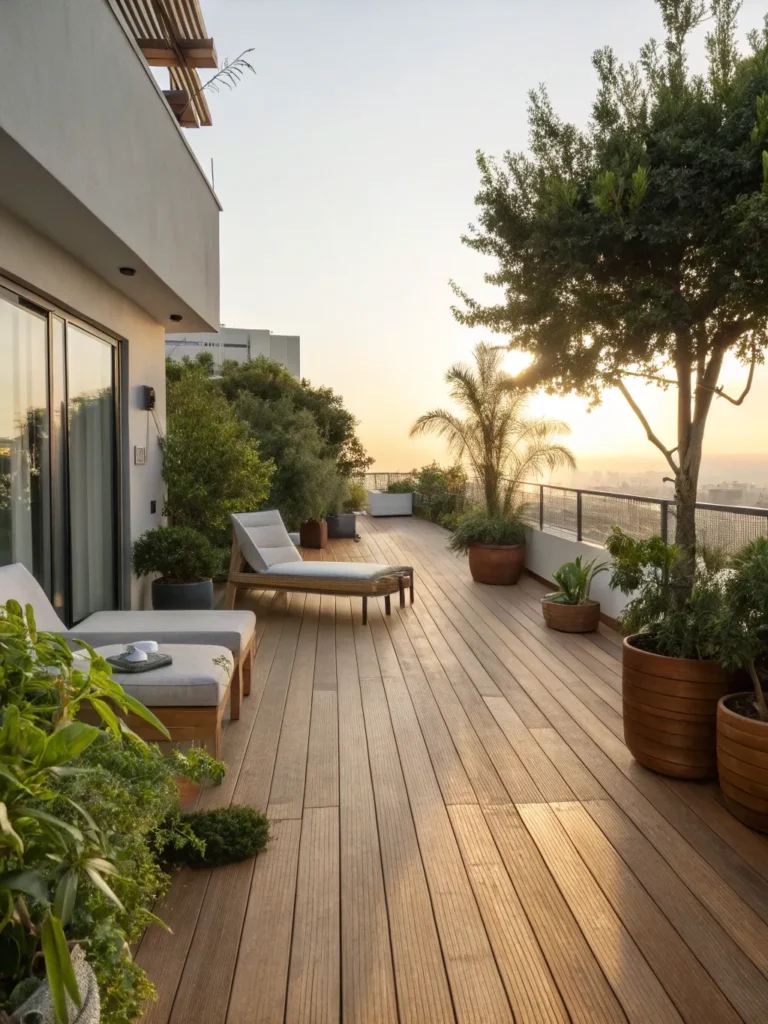30 August Flowers: The Best Late-Summer Blooms for Your Garden
As summer winds down and the golden light of late August settles in, your garden doesn’t have to fade with the season. August is a prime time to enjoy some of nature’s most stunning flowers. Whether you’re looking for vibrant color, pollinator appeal, or long-lasting blooms, this guide to 30 August flowers will help you keep your garden lively well into fall.
In this article, we'll cover
- Why August 30 Flowers Matter
- 1. Zinnia
- 2. Black-Eyed Susan (Rudbeckia)
- 3. Coneflower (Echinacea)
- 4. Marigold
- 5. Sedum (Stonecrop)
- 6. Aster
- 7. Gladiolus
- 8. Bee Balm (Monarda)
- 9. Dahlia
- 10. Phlox
- 11. Hydrangea
- 12. Coreopsis (Tickseed)
- 13. Russian Sage
- 14. Tithonia (Mexican Sunflower)
- 15. Lantana
- 16. Salvia
- 17. Verbena
- 18. Morning Glory
- 19. Canna Lily
- 20. Balloon Flower (Platycodon)
- 21. Cleome (Spider Flower)
- 22. Sunflower
- 23. Cosmos
- 24. Petunia
- 25. Ornamental Pepper
- 26. Heliopsis (False Sunflower)
- 27. Calendula (Pot Marigold)
- 28. Nicotiana (Flowering Tobacco)
- 29. Snapdragon (Antirrhinum)
- 30. Yarrow (Achillea)
- Caring for Late-Summer Flowers
- Garden Design Ideas with August Flowers
- Cut Flower Tips for August
- Pollinator Power
- Final Thoughts
- FAQs
- What flowers are still blooming in late August?
- Can I plant flowers at the end of August?
- Which August flowers attract pollinators?
- How do I keep my garden colorful through September?
- What is the best flower for a late-summer bouquet?
Why August 30 Flowers Matter
Many early-summer blooms begin to wane in August, but that doesn’t mean your flower beds have to. In fact, late-summer flowers:
- Attract vital pollinators like bees and butterflies
- Extend the garden’s seasonal interest
- Provide excellent cut flowers
- Transition beautifully into fall
Below are 30 spectacular flowers that shine around August 30, including care tips and variety suggestions.
1. Zinnia
Zinnias are the vibrant workhorses of the late-summer garden. Blooming profusely around August 30, they come in a rainbow of colors—red, orange, pink, yellow, white, and even green. Their daisy-like flowers are not only striking but also long-lasting, making them ideal for fresh-cut arrangements.
Zinnias thrive in full sun and well-drained soil, requiring minimal care once established. They are also drought-tolerant, which makes them a favorite in low-maintenance gardens. One of their best features? They’re magnets for butterflies and bees.
Popular Varieties
- Benary’s Giant: Tall plants with large, double blooms in vivid colors—perfect for bouquets. (Zones 3–10)
- Profusion Orange: Compact, mounding plants with bright orange flowers—great for borders and containers. (Zones 3–9)
- Zahara Starlight Rose: Disease-resistant with white petals and rose centers—striking in mass plantings. (Zones 4–9)
- State Fair Mix: Classic tall mix with bold, bright blooms—adds drama to garden beds. (Zones 3–10)
- Thumbelina: Dwarf variety with petite, colorful blooms—ideal for pots and small spaces. (Zones 4–9)Bright, hardy, and endlessly colorful. Great for cutting and attracting butterflies.
2. Black-Eyed Susan (Rudbeckia)
Black-Eyed Susans are a garden staple in late summer, delivering cheery golden-yellow petals and dark, cone-shaped centers. Blooming vigorously around August 30, they’re a top choice for adding warmth and brightness to any flower bed or border.
These hardy perennials love full sun and adapt well to a variety of soil types. They’re also drought-tolerant once established, making them great for low-maintenance gardeners.
Popular Varieties
- Goldsturm: The classic variety—compact, long-blooming, and ideal for borders. (Zones 3–9)
- Little Goldstar: A dwarf form perfect for small spaces and container gardening. (Zones 4–9)
- Indian Summer: Features enormous sunflower-like blooms—great for cutting. (Zones 3–7)
- Cherokee Sunset: Double and semi-double flowers in orange, red, and bronze hues—unique and dramatic. (Zones 5–9)
- Prairie Sun: Unusual pale yellow petals with green centers—excellent for mixed beds. (Zones 5–9)
- Early Bird Gold: One of the earliest to bloom and continues through late summer. (Zones 4–9)
Pro Tip: Deadhead regularly to encourage longer blooming and a second flush of flowers.
3. Coneflower (Echinacea)
Coneflowers are resilient perennials known for their daisy-like shape and raised central cone. They bring a wildflower aesthetic to the garden and are beloved by bees, butterflies, and birds alike.
Blooming strongly through late summer, they do best in full sun and well-drained soil, and they’re among the most drought-tolerant flowers you can grow.
Popular Varieties
- PowWow Wild Berry: Bright magenta blooms on compact, tidy plants. (Zones 3–9)
- White Swan: Elegant white petals with golden centers—offers a clean, minimalist look. (Zones 3–9)
- Green Twister: Eye-catching with lime green tips and pinkish-purple centers. (Zones 4–9)
- Cheyenne Spirit: Multi-colored blooms on the same plant—low maintenance and vibrant. (Zones 4–9)
- Magnus: Large, rose-purple blooms with tall, sturdy stems—perfect for cut flowers. (Zones 3–8)
- Double Decker: Unique double blooms stacked atop each other—great conversation piece. (Zones 3–8)
Growing Tip: Leave the seed heads standing in fall—finches love to feed on them, and they add winter interest to your garden.
4. Marigold
Marigolds are tough, cheerful annuals that burst with gold, orange, and yellow blooms well into late summer. On August 30, they are still thriving, making them an excellent choice for ongoing color and utility.
These flowers love full sun and are extremely low-maintenance. They’re also a natural pest deterrent, commonly used in vegetable gardens for companion planting.
Popular Varieties
- Crackerjack: Tall with huge blooms in deep orange and golden yellow—fantastic for borders. (Zones 2–11)
- French Dwarf Double Mix: Compact with double blooms—ideal for edging and containers. (Zones 2–11)
- Inca II Gold: Large, full golden blooms with excellent heat tolerance. (Zones 2–11)
- Safari Red: Red and orange bi-color blooms—eye-catching in containers. (Zones 2–11)
- Durango Tangerine: Single, vivid orange blooms with great disease resistance. (Zones 2–11)
- Alumia Vanilla Cream: Soft, creamy white blooms—rare and elegant. (Zones 2–11)
Pro Tip: Plant marigolds near tomatoes and beans to naturally reduce nematodes and aphids.
5. Sedum (Stonecrop)
Sedum is a rugged perennial known for its fleshy, succulent leaves and star-shaped flowers that bloom profusely in late summer. These plants provide visual interest, drought resistance, and are favorites among bees.
Thriving in full sun and poor soil, sedum is perfect for rock gardens, borders, or container plantings. The blooms start appearing in late August and last into fall.
Popular Varieties
- Autumn Joy: Pink flower heads deepen to bronze—an excellent fall transition plant. (Zones 3–9)
- Matrona: Reddish stems and pale pink blooms—adds texture and contrast. (Zones 3–9)
- Purple Emperor: Dark purple foliage and rose-pink flowers—dramatic and bold. (Zones 4–9)
- Dragon’s Blood: Groundcover with red-tinged foliage and crimson flowers. (Zones 3–9)
- Lemon Ball: Bright chartreuse foliage with yellow blooms—great for sunny accents. (Zones 7–11)
- Mr. Goodbud: Deep mauve flowers with thick stems—ideal for heavy summer rains. (Zones 3–9)
- Angelina: Bright golden-green foliage with orange tinges in fall—stunning in mass plantings. (Zones 5–9)
Growing Tip: Avoid overwatering—sedums prefer dry conditions and can suffer in soggy soil.
6. Aster
Asters are star-shaped perennials that bloom just as many summer flowers begin to fade, making them essential for late-season color. With shades of purple, lavender, blue, pink, and white, they’re also a top choice for pollinator gardens.
They prefer full sun to partial shade and well-drained soil. Their blooms often last from late August through October, bridging the summer-fall gap beautifully.
Popular Varieties
- New England Aster: Tall, showy, and vibrant—ideal for naturalistic landscapes. (Zones 4–8)
- Wood’s Pink: Compact, mildew-resistant variety with soft pink blooms. (Zones 4–9)
- October Skies: Low-growing with sky-blue flowers—perfect for mass plantings. (Zones 5–9)
- Alert: Bright carmine-red blooms—striking in fall flower beds. (Zones 4–8)
- Bluebird: Clear blue flowers with exceptional vigor—pollinator favorite. (Zones 3–8)
- Harrington’s Pink: Large pink flowers on tall stems—graceful and elegant. (Zones 4–8)
- Lady in Black: Dark foliage with tiny lavender flowers—adds moody texture. (Zones 4–8)
Pro Tip: Cut back asters by one-third in early summer to encourage bushier growth and more flowers in late August.
7. Gladiolus
Gladiolus, or “glads,” are stately bloomers with tall flower spikes that add architectural drama to any garden. They begin blooming in mid- to late summer and hit their stride by the end of August.
Gladiolus prefers full sun and rich, well-drained soil. While not perennial in colder zones, they can be lifted and stored for reuse next year.
Popular Varieties
- Black Beauty: Nearly black maroon blooms—adds drama and depth. (Zones 7–10)
- Peter Pears: Bright coral-orange with ruffled petals—ideal for vibrant displays. (Zones 7–10)
- Green Star: Pale green blooms—rare and refreshing. (Zones 7–10)
- White Prosperity: Elegant white variety for bouquets or moon gardens. (Zones 7–10)
- Purple Flora: Intense purple hue—perfect contrast plant. (Zones 7–10)
- Atom: Scarlet red with white edging—compact and unique. (Zones 7–10)
- Passos: Bold yellow petals with red blotches—eye-catching for borders. (Zones 7–10)
Growing Tip: Stagger planting every 2 weeks in summer to extend blooming into September.
8. Bee Balm (Monarda)
Bee Balm adds a burst of spiky, colorful blooms in reds, pinks, and purples during late summer. It’s beloved by bees, butterflies, and hummingbirds, making it a top-tier choice for pollinator gardens.
This native perennial thrives in full sun to part shade and moist, well-draining soil. Its aromatic foliage even adds value when crushed or brewed into tea.
Popular Varieties
- Jacob Cline: Tall, vigorous red blooms—hummingbird magnet. (Zones 4–9)
- Raspberry Wine: Deep wine-red blooms and dark stems—great for back borders. (Zones 4–9)
- Petite Delight: Compact and mildew-resistant—ideal for small gardens. (Zones 3–8)
- Marshall’s Delight: Pink flowers with good mildew resistance. (Zones 3–9)
- Purple Rooster: Deep purple blooms on sturdy stems—great for cutting. (Zones 3–8)
- Croftway Pink: Soft pink flowers and scented foliage—cottage garden favorite. (Zones 4–9)
- Blue Stocking: Violet-blue flowers—unusual and striking. (Zones 4–9)
Pro Tip: To prevent powdery mildew, ensure good air circulation and avoid overhead watering.
9. Dahlia
Dahlias are showstoppers with blooms ranging from tiny pom-poms to massive dinner-plate flowers. Bursting into full color by late August, they provide an extravagant display into fall.
They thrive in full sun and nutrient-rich, well-drained soil. Although tender tubers must be lifted in colder zones, the floral payoff is immense.
Popular Varieties
- Café au Lait: Creamy blush tones—perfect for elegant arrangements. (Zones 8–10)
- Bishop of Llandaff: Single red blooms with dark foliage—dramatic contrast. (Zones 8–10)
- Thomas Edison: Huge, deep purple flowers—eye-catching centerpieces. (Zones 8–10)
- Honka: Star-shaped yellow blooms—quirky and whimsical. (Zones 8–10)
- Karma Choc: Dark burgundy blooms with long vase life. (Zones 8–10)
- Labyrinth: Swirled peach and pink petals—flamboyant and unique. (Zones 8–10)
- Arabian Night: Deep red, velvety blooms—adds richness to fall gardens. (Zones 8–10)
Growing Tip: Pinch early growth to encourage bushier plants and more blooms.
10. Phlox
Phlox brings fragrance and vibrant clusters of flowers to late-summer gardens. It blooms generously around August 30 and is excellent for attracting butterflies.
Phlox prefers full sun and rich, well-drained soil. Some varieties are mildew-resistant, making them easy to maintain even in humid conditions.
Popular Varieties
- David: Pure white, fragrant blooms—tall and mildew-resistant. (Zones 4–8)
- Laura: Bright purple petals with a white eye—classic and reliable. (Zones 4–8)
- Blue Paradise: Blue-violet blooms deepen in color at dusk—perfect for twilight gardens. (Zones 3–8)
- Jeana: Light lavender flowers—exceptional for pollinators and disease resistance. (Zones 4–8)
- Candy Stripe: Ground cover with pink-and-white blooms—great for borders. (Zones 3–9)
- Nicky: Deep magenta flowers on sturdy stems—ideal for cutting gardens. (Zones 4–8)
- Volcano Ruby: Bright ruby-red blooms—compact and mildew-resistant. (Zones 4–9)
Pro Tip: Deadhead spent flowers regularly to prolong blooming into early fall.
11. Hydrangea
Hydrangeas are the grand dames of the late-summer garden, with their lush, oversized flower heads that range from delicate pastels to vivid blues and pinks. These blooms create an old-world charm in both shaded and partially sunny areas, making them versatile for a wide range of garden designs.
Hydrangeas flourish in well-drained, fertile soil and benefit from consistent moisture. The bloom color of some types can even change depending on soil pH, offering gardeners a fun, interactive growing experience.
Popular Varieties
- Limelight: Cone-shaped, lime-green flowers that age to soft pink. (Zones 3–9)
- Endless Summer: Reblooming mophead with blue or pink flowers based on pH. (Zones 4–9)
- Annabelle: Classic white flowers on sturdy stems—perfect for shaded areas. (Zones 3–9)
- Little Lime: Dwarf version of Limelight with equal beauty and vigor. (Zones 3–9)
- Twist-n-Shout: Lacecap style with repeat blooms—strong stems and great form. (Zones 4–9)
- Fire Light: White flowers that turn deep red—excellent late-season color. (Zones 3–8)
- Pinky Winky: Two-toned panicles shift from white to dark pink. (Zones 3–8)
Growing Tip: Mulch heavily and water regularly during heat waves to protect shallow roots and maintain bloom quality.
12. Coreopsis (Tickseed)
Coreopsis, often called Tickseed, brings a carefree burst of sunny color to the August garden. With a long blooming season and bright daisy-like flowers, this low-maintenance perennial keeps borders cheerful when other blooms fade.
It thrives in full sun and well-drained soil and is particularly useful in drought-prone or pollinator-friendly gardens.
Popular Varieties
- Moonbeam: Pale yellow flowers on airy, fine-textured foliage. (Zones 4–9)
- Zagreb: Compact with golden-yellow blooms and fine leaves. (Zones 4–9)
- Early Sunrise: Semi-double golden blooms—perfect for long-lasting color. (Zones 4–9)
- Sienna Sunset: Soft orange hues add a warm contrast to brighter yellows. (Zones 4–9)
- Red Satin: Deep burgundy flowers—great for vibrant mass plantings. (Zones 4–9)
- Route 66: Yellow petals splashed with red—striking and heat-tolerant. (Zones 4–9)
- Jethro Tull: Tubular yellow petals and compact habit—unique look. (Zones 5–9)
Pro Tip: Shear the plant back by half after the first flush to promote a fresh wave of blooms through September.
13. Russian Sage
Russian Sage (Perovskia atriplicifolia) adds graceful texture and soft blue-lavender color to August gardens. Its wispy stems and silvery-green foliage give a dreamy, ethereal look while attracting bees and butterflies alike.
This tough perennial thrives in full sun, heat, and poor soils, making it ideal for xeriscaping or low-maintenance designs. It blooms persistently from mid-summer into fall.
Popular Varieties
- Blue Spire: Tall and bushy with vivid lavender-blue flowers. (Zones 4–9)
- Little Spire: A dwarf version—perfect for small gardens or containers. (Zones 4–9)
- Denim ‘n Lace: Upright and compact with bright periwinkle-blue blooms. (Zones 4–9)
- Rocketman: More upright and tidy with strong stems and fragrance. (Zones 4–9)
- Peek-a-Blue: Soft color and dense habit—works well in borders. (Zones 4–9)
- Filigran: Graceful, open habit and finely divided foliage. (Zones 4–9)
- Longin: Narrow and upright—great for vertical interest in mixed beds. (Zones 4–9)
Growing Tip: Cut back hard in early spring to encourage fresh growth and a fuller shape for late-summer blooming.
14. Tithonia (Mexican Sunflower)
Tithonia is a showy annual that lights up the garden with fiery orange blooms, especially around late August. These tall plants grow fast and bloom heavily, offering nectar-rich flowers that lure butterflies, bees, and hummingbirds.
Tithonia thrives in full sun and well-drained soil and tolerates heat and drought like a champ. Its bold colors make it ideal for back borders or wildflower gardens.
Popular Varieties
- Torch: The most well-known, with deep orange, daisy-like blooms. (Zones 2–11)
- Fiesta del Sol: A compact dwarf version that’s excellent for small gardens. (Zones 3–10)
- Goldfinger: Shorter height with vivid golden-orange flowers. (Zones 3–10)
- Red Torch: A striking red-orange cultivar—vibrant and unique. (Zones 3–10)
- Yellow Torch: Bright yellow petals for sunny contrast. (Zones 3–10)
- Tithonia rotundifolia ‘Tall Mexican Sunflower’: A towering plant—ideal for large borders. (Zones 2–11)
Pro Tip: Deadhead regularly to extend blooming and prevent excessive self-seeding.
15. Lantana
Lantana is a sun-loving annual or tender perennial with clusters of small, bright flowers that often change color as they age. Blooming heavily in late summer, lantana thrives in heat and drought, making it a top performer for August gardens.
It’s perfect for containers, borders, or hanging baskets, and it attracts butterflies like few other flowers can.
Popular Varieties
- Miss Huff: Hardy perennial with multicolor blooms—very reliable. (Zones 7–11)
- New Gold: Low-growing, spreading habit with golden-yellow flowers. (Zones 9–11)
- Bandana Cherry: Compact, vibrant red and pink blooms—great in containers. (Zones 8–11)
- Patriot Rainbow: Red, orange, and yellow flowers with trailing growth. (Zones 9–11)
- Luscious Citrus Blend: Mixture of orange, pink, and yellow hues. (Zones 9–11)
- Radiation: Strong color shift from red to orange to yellow. (Zones 9–11)
- Irene: Pink and yellow bicolor blooms with strong fragrance. (Zones 9–11)
Growing Tip: Prune lightly during the growing season to keep lantana bushy and blooming continuously.
16. Salvia
Salvia is a dynamic and reliable bloomer in the late summer garden, featuring vertical spikes of flowers in shades of blue, purple, red, and white. These eye-catching blooms provide structure and movement while also being a pollinator magnet, drawing in bees, butterflies, and hummingbirds.
Salvia thrives in full sun and well-drained soil and performs beautifully in borders, herb gardens, and containers. Many types are drought-tolerant and deer-resistant.
Popular Varieties
- May Night: Deep violet-purple flower spikes with a long bloom time. (Zones 4–9)
- Hot Lips: Red and white bi-colored blooms—unique and heat-loving. (Zones 7–10)
- Caradonna: Tall, dark stems with electric blue-purple flowers. (Zones 4–9)
- Amistad: Bold, rich purple flowers on sturdy stems—loved by hummingbirds. (Zones 8–10)
- Victoria Blue: Classic bright blue spikes—great for mass plantings. (Zones 4–9)
- Snow Hill: Pure white flowers that brighten borders. (Zones 4–9)
- Cherry Queen: Rosy-pink blooms on a compact plant—ideal for small spaces. (Zones 6–10)
Pro Tip: Trim spent flower stalks promptly to encourage additional blooming through early fall.
17. Verbena
Verbena brings a cascade of long-lasting color to late-summer gardens, thriving in heat and sun when other flowers may fade. This low-growing bloomer forms clusters of tiny flowers in vibrant purples, reds, and pinks, making it perfect for borders, ground cover, or spilling over containers.
These resilient plants do well in full sun and well-drained soil and are known for attracting butterflies throughout their blooming season.
Popular Varieties
- Homestead Purple: Spreading ground cover with vivid purple blooms. (Zones 7–10)
- Lanai Red: Bold red blooms with a mounding habit—excellent for containers. (Zones 9–11)
- Lollipop: Compact and upright with lavender clusters—great for pots. (Zones 6–10)
- Superbena Royale Peachy Keen: Pastel blend of peach and coral—ideal for hanging baskets. (Zones 9–11)
- Empress Flair Blue: Vibrant blue-purple shade on trailing stems. (Zones 8–11)
- EnduraScape White Blush: Heat-tolerant with pale pink-white blooms—long bloom time. (Zones 8–10)
- Quartz XP Scarlet: Red flower clusters with excellent performance in hot summers. (Zones 8–10)
Growing Tip: Allow the soil to dry slightly between waterings—verbena dislikes soggy roots and thrives in lean soil.
18. Morning Glory
Morning Glories are fast-growing vines that produce trumpet-shaped blooms each morning, closing by afternoon. Their climbing habit makes them ideal for trellises, fences, and arbors, adding vertical interest and charm to late-summer gardens.
They prefer full sun and well-drained soil and are very easy to grow from seed. Morning Glories are especially loved by hummingbirds and can quickly cover a large space with minimal care.
Popular Varieties
- Heavenly Blue: Classic sky-blue flowers—beautiful and abundant. (Zones 3–10)
- Grandpa Ott’s: Deep purple blooms with red centers—striking heirloom variety. (Zones 3–10)
- Scarlett O’Hara: Bold scarlet-red blooms with a white center. (Zones 3–10)
- Flying Saucers: Swirled blue-and-white flowers—unique and eye-catching. (Zones 3–10)
- Pearly Gates: Pure white flowers on lush green vines—great for moon gardens. (Zones 3–10)
- Sunrise Serenade: Double, ruffled pink-red blooms—adds volume to fences. (Zones 3–10)
- Crimson Rambler: Intense crimson red with rapid growth—ideal for vertical drama. (Zones 3–10)
Pro Tip: Soak seeds overnight before planting to soften the hard seed coat and improve germination.
19. Canna Lily
Canna Lilies bring tropical flair to the August garden with bold, oversized leaves and vibrant flowers in shades of red, orange, yellow, and pink. They add height, color, and exotic texture, thriving in warm, sunny locations.
Canna prefers moist, rich, well-draining soil and full sun. Though not winter hardy in most zones, their rhizomes can be dug up and stored for replanting.
Popular Varieties
- Tropicanna: Striped foliage with bright orange blooms—very showy. (Zones 7–10)
- Pretoria (Bengal Tiger): Variegated yellow-striped leaves with orange flowers. (Zones 7–10)
- Australia: Bold red blooms and near-black foliage—great for dramatic beds. (Zones 7–10)
- Cleopatra: Multicolored flowers with green and maroon leaves—full of surprises. (Zones 7–10)
- Durban: Vibrant red blooms with tropical striped foliage. (Zones 7–10)
- Pink Citrus: Soft pink flowers—great for pastel-themed plantings. (Zones 7–10)
- Wyoming: Bronze foliage with bright orange flowers—excellent for contrast. (Zones 7–10)
Growing Tip: Feed monthly with a high-phosphorus fertilizer to encourage continuous blooming.
20. Balloon Flower (Platycodon)
Balloon Flowers get their name from their puffy, balloon-like buds that pop open into star-shaped blooms in late summer. They add whimsical elegance to borders and rock gardens, and are incredibly reliable year after year.
These perennials prefer full sun to partial shade and well-drained soil. Once established, they are drought-tolerant and low-maintenance.
Popular Varieties
- Sentimental Blue: Compact variety with sky-blue flowers—ideal for edging. (Zones 3–8)
- Pink Parfait: Soft pink double blooms—adds a romantic touch. (Zones 3–8)
- Showtime White: Pure white blooms—brightens shaded spots. (Zones 3–8)
- Royal Purple: Deep purple flowers—creates striking contrast in beds. (Zones 3–8)
- Mariesii: Classic blue flowers with inflated buds—great for wildflower gardens. (Zones 3–8)
- Pink Octopus: Unique split-petal pink blooms—adds texture and intrigue. (Zones 3–8)
- Hakone Blue: Upright form with vibrant blue color—stands out in containers. (Zones 3–8)
Pro Tip: Avoid disturbing mature plants—they don’t like to be moved and prefer to be left in place once established.
21. Cleome (Spider Flower)
Cleome, also known as Spider Flower, brings whimsical height and movement to August flower beds. Its tall, spiky stems topped with unique, airy blossoms resemble a spider’s legs—hence the name. These blooms range from white and pink to lavender and deep rose, blooming profusely in the late-summer heat.
This low-maintenance annual thrives in full sun and well-drained soil and is highly deer-resistant. It creates a see-through effect, ideal for layered plantings.
Popular Varieties
- Sparkler Blush: Soft pink flowers on compact, well-branched plants. (Zones 2–11)
- Senorita Rosalita: Thornless and sterile—non-invasive with long-lasting lavender-pink blooms. (Zones 9–11)
- Helen Campbell: Elegant white flowers—perfect for moon gardens. (Zones 2–11)
- Queen Series: Comes in rose, violet, and white—classic heirloom appeal. (Zones 2–11)
- Pequena Rosalita: Dwarf version of Senorita—ideal for containers. (Zones 9–11)
- Clio Magenta: Bright magenta blooms and uniform growth—great for mass planting. (Zones 2–11)
- Cherry Queen: Vivid cherry-red color for bold accents. (Zones 2–11)
Growing Tip: Cleome self-seeds prolifically—remove seed heads if you want to control spread.
22. Sunflower
Sunflowers are synonymous with late summer, standing tall with cheerful faces turned to the sun. Their towering presence and bright yellow, red, or even chocolate-colored blooms make them irresistible to pollinators and people alike.
They prefer full sun, well-drained soil, and are surprisingly drought-tolerant. From garden beds to cutting gardens to edible seed production, sunflowers serve many purposes.
Popular Varieties
- Mammoth: Classic giant with huge yellow blooms—up to 12 feet tall! (Zones 3–9)
- Autumn Beauty: Multicolored petals in red, bronze, and yellow—striking in mass plantings. (Zones 3–9)
- Teddy Bear: Fluffy, double yellow blooms—perfect for kids’ gardens. (Zones 3–9)
- Lemon Queen: Pale yellow petals with dark centers—pollinator favorite. (Zones 3–9)
- Velvet Queen: Rich burgundy-red blooms—adds drama and contrast. (Zones 3–9)
- Chianti: Wine-red blooms without pollen—great for indoor bouquets. (Zones 3–9)
- Sunrich Gold: Uniform golden blooms for professional-grade cut flowers. (Zones 3–9)
- ProCut White Nite: Creamy petals with dark centers—unique and elegant. (Zones 3–9)
Pro Tip: Stake taller varieties early and plant successively every 2 weeks for continuous blooming.
23. Cosmos
Cosmos are delicate and charming with fern-like foliage and daisy-like flowers that sway gently in the breeze. Blooming heavily through August, they offer long-lasting color and are highly attractive to butterflies.
They grow best in full sun and poor to average soil. In fact, too much fertilizer can reduce blooming, making cosmos delightfully low-maintenance.
Popular Varieties
- Sensation Mix: Classic tall cosmos in a rainbow of pinks, reds, and whites. (Zones 2–11)
- Cupcake Blush: Ruffled, cupped petals with soft blush hues—unique floral shape. (Zones 2–11)
- Sonata White: Compact, pure white flowers—great for small gardens. (Zones 2–11)
- Double Click Cranberries: Double, frilly cranberry-red blooms—excellent for cutting. (Zones 2–11)
- Sea Shells: Petals shaped like fluted tubes—delicate and different. (Zones 2–11)
- Cosmic Orange: Bright orange petals on shorter, bushy plants. (Zones 2–11)
- Rubenza: Deep red blooms that fade to antique rose—perfect for vintage gardens. (Zones 2–11)
Growing Tip: Deadhead often to keep blooms coming and prevent self-seeding.
24. Petunia
Petunias are vibrant, versatile, and perfect for late-summer gardens. Their trumpet-shaped blooms offer brilliant color through August and beyond, thriving in containers, borders, and hanging baskets.
They do best in full sun with regular watering and light feeding. With so many colors and forms, there’s a petunia for every design need.
Popular Varieties
- Wave Purple: Ground-covering growth and nonstop blooms. (Zones 9–11)
- Supertunia Vista Bubblegum: Award-winning pink blooms with vigorous growth. (Zones 9–11)
- Crazytunia Blackberry Cheesecake: Deep purple and cream bi-color—very striking. (Zones 9–11)
- Night Sky: Speckled purple petals resembling a galaxy. (Zones 9–11)
- Easy Wave Red Velour: Bold red blooms—perfect for patriotic displays. (Zones 9–11)
- Tidal Wave Silver: Silver-white petals with purple veining—sophisticated and bold. (Zones 9–11)
- Opera Supreme White: Fast-growing white blooms—great for moon gardens. (Zones 9–11)
- Limbo Violet: Compact habit with large violet blooms—ideal for containers. (Zones 9–11)
Pro Tip: Pinch stems regularly to keep plants compact and covered in flowers.
25. Ornamental Pepper
Ornamental peppers are a fun way to add color and interest to your garden! With vivid fruits that change color as they mature, these plants are not only beautiful but also unique. They typically bloom in late summer and into fall, with August being a prime time for their striking displays.
They thrive in full sun and well-drained soil. Plus, they make excellent container plants and can add a fun twist to your flower arrangements.
Popular Varieties
- Black Pearl: Glossy black foliage with round, shiny black peppers that mature to bright red—adds striking contrast to containers and beds. (Zones 9–11)
- Numex Twilight: Colorful peppers that change from purple to yellow to orange and red—vibrant and eye-catching in garden displays. (Zones 9–11)
- Medusa: Upright spikes of small, bright red peppers—excellent for vertical interest and hot climates. (Zones 9–11)
- Bolivian Rainbow: Multicolored peppers in shades of purple, orange, yellow, and red—adds a festive look to containers. (Zones 9–11)
- Black Cobra: Dark purple-black fruits on upright plants—dramatic and unusual for ornamental use. (Zones 9–11)
- Carmen: Fiery red, elongated peppers—great for heat and adding bold color to landscapes. (Zones 9–11)
- Chilly Chili: Child-safe variety with colorful, non-pungent fruit—perfect for family gardens. (Zones 9–11)
- Sangria: Compact with lavender to red fruits—bright and easy to grow. (Zones 9–11)
Growing Tip: Although grown for looks, some varieties are edible—just expect them to be fiery hot!
26. Heliopsis (False Sunflower)
Heliopsis, commonly called False Sunflower, brings golden cheer to gardens right when many flowers begin to fade. Blooming in abundance in late August, these daisy-like perennials resemble miniature sunflowers and are beloved for their long bloom season, upright growth, and resilience.
They flourish in full sun and average to dry soil. Drought-tolerant and low-maintenance, Heliopsis makes a great backdrop in borders and is ideal for naturalistic and pollinator-friendly designs.
Popular Varieties
- Summer Sun: Tall and vigorous with classic golden-yellow blooms. (Zones 3–9)
- Tuscan Sun: Compact, mounding variety with rich yellow flowers. (Zones 4–9)
- Burning Hearts: Stunning bicolor with red centers and golden tips—eye-catching. (Zones 3–9)
- Bleeding Hearts: Bold orange-red inner discs with yellow petals—great for contrast. (Zones 3–9)
- Ballerina: Semi-double blooms with unique texture and movement. (Zones 4–9)
- Prairie Sunset: Warm, amber tones that deepen with age. (Zones 4–9)
- Loraine Sunshine: Cream-yellow flowers with variegated foliage—two-in-one interest. (Zones 4–9)
Growing Tip: Deadhead spent flowers to extend the blooming season into fall.
27. Calendula (Pot Marigold)
Calendula is a versatile and hardy annual known for its cheerful orange and yellow blooms that keep coming through August and beyond. Valued not only for its beauty but also for its medicinal properties, it’s a favorite among herbalists and organic gardeners.
Calendula thrives in cooler climates, tolerates light frost, and grows well in full sun to partial shade. Its petals are edible and often used in teas, oils, or as a colorful garnish.
Popular Varieties
- Orange King: Tall with large, fiery orange blooms—great for beds. (Zones 2–11)
- Pacific Beauty Mix: A blend of yellow, gold, and apricot shades—vivid and reliable. (Zones 2–11)
- Resina: High-resin variety used for medicinal salves and oils. (Zones 2–11)
- Snow Princess: Soft ivory petals—rare and elegant. (Zones 2–11)
- Alpha: Fast-growing with double blooms in rich gold. (Zones 2–11)
- Indian Prince: Striking dark orange with mahogany undersides—adds depth. (Zones 2–11)
- Zeolights: Peachy-coral petals with a vintage vibe—very unique. (Zones 2–11)
Pro Tip: Regularly pinch off faded blooms to encourage non-stop flowering and fuller growth.
28. Nicotiana (Flowering Tobacco)
Nicotiana is an elegant annual that offers sweet-scented blooms—especially in the evening. Its star-shaped flowers appear in clusters and add a soft, romantic quality to garden beds, borders, and containers.
It prefers full sun to partial shade and rich, moist soil. Blooming late into August, nicotiana attracts night pollinators like moths and is often planted near patios for its nighttime fragrance.
Popular Varieties
- Only the Lonely: Tall variety with large white trumpet-shaped blooms. (Zones 10–11)
- Perfume Deep Purple: Compact with strong fragrance and vivid color. (Zones 10–11)
- Domino Mix: Mixed shades of pink, red, white, and lime—great for containers. (Zones 10–11)
- Saratoga Appleblossom: Delicate pink blooms on compact plants. (Zones 10–11)
- Fragrant Cloud: Renowned for its strong evening scent—pure white flowers. (Zones 10–11)
- Lime Green: Unique lime-hued blooms that pair well with darker plants. (Zones 10–11)
- Starmaker Bright Rose: Early bloomer with intense magenta-pink flowers. (Zones 10–11)
Growing Tip: Water at the base to avoid mildew, and place near seating areas to enjoy its scent at dusk.
29. Snapdragon (Antirrhinum)
Snapdragons are classic cool-season annuals that make a surprising comeback in late August as nights cool. Their dragon-shaped blooms come in nearly every color and add vertical texture to borders and containers.
They perform best in full sun and rich, well-drained soil. With the right care, snapdragons can bloom well into fall, making them a reliable transition flower.
Popular Varieties
- Rocket Mix: Tall and stately with bold flower spikes. (Zones 7–11)
- Liberty Classic: Uniform, vibrant blooms ideal for cutting. (Zones 7–11)
- Twinny Peach: Soft peachy tones with a double-bloom form—great for pastel gardens. (Zones 7–11)
- Chantilly Bronze: Elegant open-faced blooms—long-stemmed for vases. (Zones 7–11)
- Madame Butterfly: Double azalea-style blooms—full and romantic. (Zones 7–11)
- Snapshot Burgundy: Compact size with rich burgundy tones. (Zones 7–11)
- Sonnet Yellow: Bright lemon-yellow blooms—adds cheer to beds. (Zones 7–11)
Pro Tip: Pinch back stems when young to promote branching and fuller blooms throughout the season.
30. Yarrow (Achillea)
Yarrow is a tough perennial known for its feathery foliage and flat-topped clusters of tiny flowers. Blooming persistently through late August, it’s an ideal choice for drought-tolerant gardens and pollinator habitats.
This low-maintenance plant thrives in full sun and well-drained soil. Its flowers are excellent for drying, and its foliage remains attractive even after blooming ends.
Popular Varieties
- Moonshine: Bright lemon-yellow flowers with silvery leaves—classic and easy. (Zones 3–9)
- Paprika: Red blooms that fade to soft pink—adds dynamic color. (Zones 3–9)
- Cerise Queen: Deep magenta flowers—great for mixed borders. (Zones 3–9)
- Strawberry Seduction: Strawberry-red flowers with golden centers. (Zones 4–9)
- Summer Pastels: Soft blend of lavender, peach, pink, and yellow. (Zones 3–9)
- Terracotta: Rustic orange blooms that deepen with age—great for autumn style. (Zones 3–9)
- Coronation Gold: Long stems with golden yellow blooms—fantastic for drying. (Zones 3–9)
Growing Tip: Divide every 2–3 years to prevent overcrowding and keep plants vigorous.
Caring for Late-Summer Flowers
To keep your August 30 blooms thriving:
- Water deeply once or twice a week
- Deadhead spent blooms to encourage new ones
- Mulch to retain moisture and cool the roots
- Feed lightly with a balanced fertilizer
Garden Design Ideas with August Flowers
- Mix Zinnias, Gladiolus, and Cosmos for a rainbow explosion
- Combine Hydrangea and Russian Sage for soft texture
- Use Marigolds in vegetable gardens for natural pest control
Cut Flower Tips for August
- Cut in early morning for best vase life
- Use sharp scissors or snips
- Remove foliage below waterline
- Change water every 2 days
Pollinator Power
Planting late-bloomers helps:
- Feed hungry bees, butterflies, and hummingbirds
- Produce seeds for birds
- Maintain garden activity and balance
Final Thoughts
As summer winds down, your garden can still be full of life, color, and pollinators. These 30 August flowers offer vibrant blooms, resilience in late-season heat, and excellent value for cutting gardens, wildlife, and seasonal interest. From towering sunflowers to fragrant phlox and elegant dahlias, each plant adds a unique flair to your outdoor space. Whether you’re designing for beauty, attracting pollinators, or extending your blooming season, late-summer flowers ensure your garden finishes strong. Embrace these blooms now to enjoy a seamless transition into fall with a thriving, colorful landscape.
FAQs
Discover more from Leafy Haven Home | Stylish Garden Ideas & Cozy Decor Tips
Subscribe to get the latest posts sent to your email.


